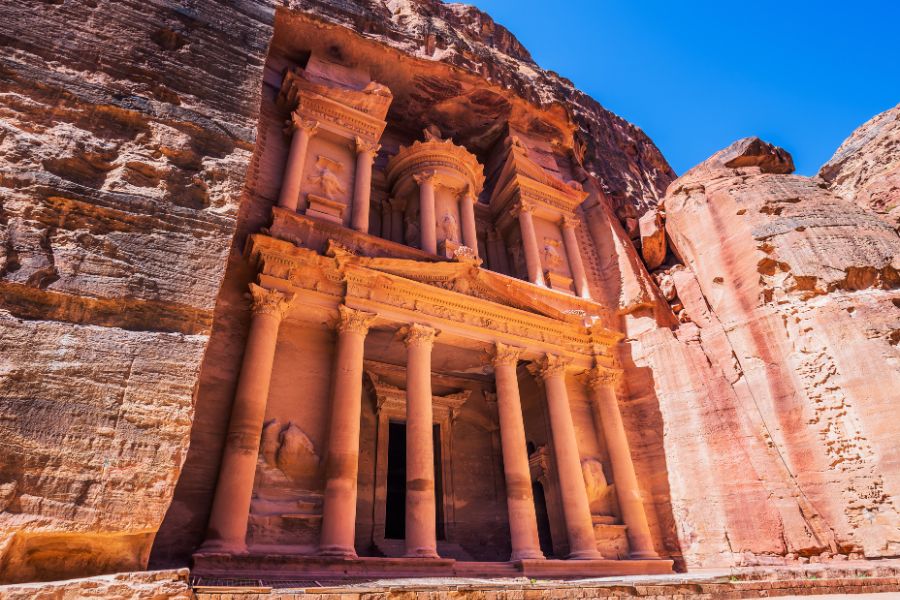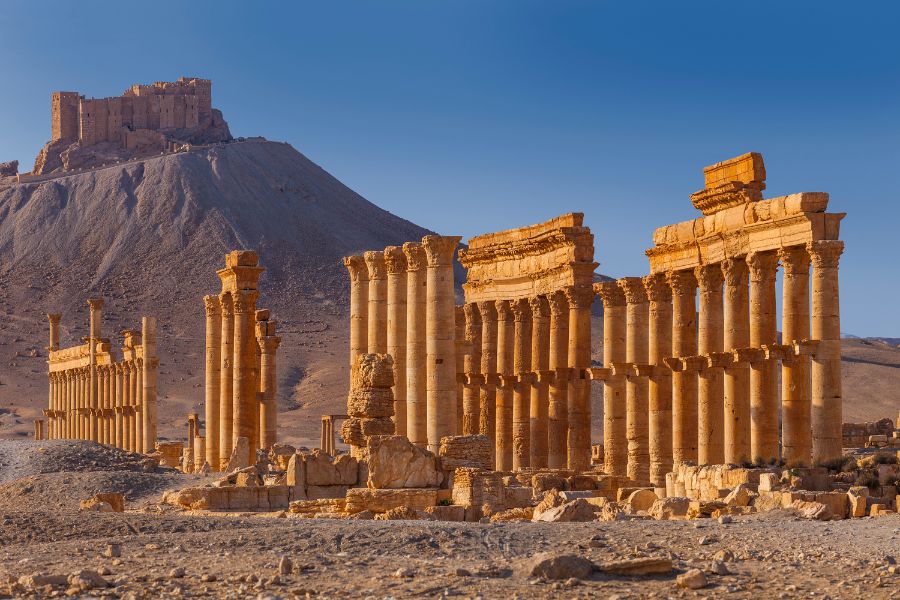If you are a travel enthusiast with a love of architectural marvels, there are many wonders in the world for you to visit and explore. The Eiffel Tower, the Taj Mahal, and the Great Wall of China are, of course, among the most notable sites that tourists flock to each year. But what of the lesser-known hidden gems that often go unnoticed?
If exploring ancient civilisations, historical venues, and awe-inspiring buildings is what you look for when planning a vacation, then here are some of the best spots to see that you might not even be aware of.
1. Petra, Jordan

Petra is a remarkable archaeological site that any history or architecture lover should visit at least once. It’s safe to say that Petra is Jordan’s most popular tourist attraction and anyone who takes a trip to Jordan should include Petra in their itinerary.
Petra was named a UNESCO World Heritage Site in 1985 and is regarded as one of the “Seven Wonders of the World”. Nestled in the middle of desert canyons, Petra is often called the “Lost City” or “Rose City” due to the peculiar colour of the stone that it was constructed from.
Visiting Petra, you will have the chance to admire the beautiful fusion of Hellenistic architectural facades and traditional Nabataean rock-cut temples and tombs that were carved into the rock in ancient times. The Siq, the Treasury, the Monastery, and the Theatre are the most visited spots: if you are staying after dark you will be treated to the spectacular sight of 1,500 candles lighting the way to the Treasury.
2. Alhambra, Spain

Situated in the Spanish city of Granada, the Alhambra is a picturesque palace and fortress dating back to the 13th century. It is considered to be a masterpiece of Islamic architecture and is one of the best-preserved palaces of its kind.
The Alhambra has been modified many times across several centuries, influenced by different rulers and religions. It was chiefly constructed between 1238 and 1358 however, with the most popular structures credited to sultans Yusuf I and Muhammad V. These notable elements includes the Patio of the Lions, the Justice Gate, and the Baths.
The Alhambra houses some of the greatest pieces of Spanish Renaissance architecture, and although you can visit this site without a guide, you should definitely book one to gain valuable insight into the meaning behind the design, interior detailing, and artwork.
3. Kyoto, Japan

When thinking about Japan, we often think about the cutting-edge technology and its welcoming people. However, it is also true that Japan offers so much more, especially during an in-depth tour of this remote land.
If architecture is top of your agenda, Japan has a vast array of buildings – both old and new – that will capture your attention. While in Tokyo you can find newer structures, like the Tokyo Tower or the Tokyo Skytree, Kyoto is the city to visit to experience Japan’s old temples and palaces.
Not a lot of people know that Kyoto was the capital of Japan for more than 1,000 years before it moved to Tokyo, and it is thanks to this heritage that architecture and art thrived in this city. Among the wide range historic structures that you can visit in Kyoto, some of the most famous are Kinkaku-ji, Ginkaku-ji, Fushimi Inari Shrine, and Yasaka Pagoda. These can be admired on a visit to the iconic Higashimayama district.
4. Fatehpur Sikri, India

Fatehpur Sikri is a small city in Northern India, located not too far from the Taj Mahal. Constructed between 1571 and 1573, Fatehpur Sikri – a city of red sandstone – once served as the capital of the Mughal Empire.
Fatehpur Sikri is best known for its mosque, the Jama Masjid. This was built by Emperor Akbar, grandfather of the monarch who commissioned the Taj Mahal masoleum. The Jama Masjid is one of the country’s largest mosques, with a vast courtyard and intricated interior decorations. The most remarkable piece of this mosque, however, is its main entrance gate, Buland Darwaza, the Gate of Magnificence.
Buland Darwaza was built to celebrate the victory of the emperor over Gujarat. The gate rises at a height of 54m and is made of red and buff sandstone and decorated with white and black marble. With features as staggering as this, it is no surprise that Fatehpur Sikri was named a World Heritage Site by UNESCO in 1986.
5. Palmyra, Syria

Often referred to as the “Venice of the Sands”, Palmyra was an ancient desert city that flourished during the days of the Roman Empire.
Located in Syria, Palmyra is renowned for its archaeological significance and attracts flocks of tourists every year. Notable landmarks that can be found during a visit to Palmyra include the Grand Colonnade, the Temple of Baal, the Roman Theater, the Arch of Triumph, and the ancient necropolis.
Palmyra’s recipe for success is its unique blend of Roman and Middle Eastern architecture. These magnificent ruins have been well-preserved for centuries and they are a testament to the importance of the city as a trade hub along the Silk Road, and a crossroads of several civilisations.


















